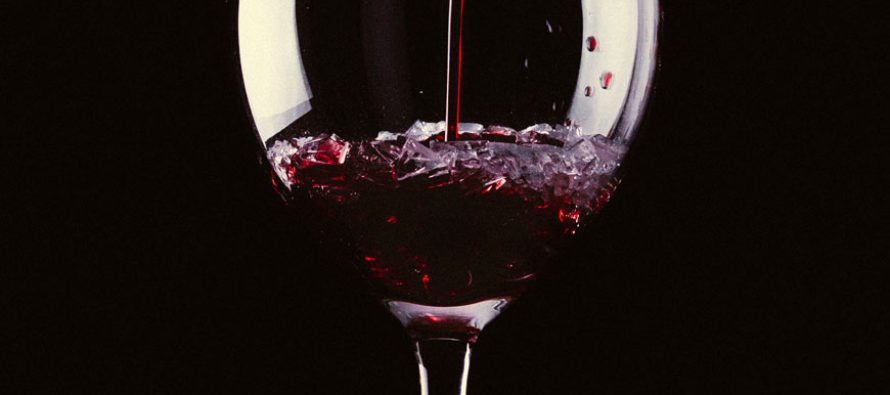Grape Expectations

I like a good movie. Hey, who doesn’t? However, if I’m in the mood for a suspense filled action thriller only to find myself watching a romantic comedy I most certainly will be disappointed. Don’t get me wrong, I can handle a well written cheese ball chick flick as well as anybody. But I have to be prepared. If I’m looking for “Saving Private Ryan”, don’t give me Meg Ryan. That’s just wrong.
Fortunately, we usually know what to expect when viewing a movie. The homework is easy. There are reviews, trailers, star appearances on late night TV, newspaper and magazine interviews, online and offline ads, and news flashes galore. Minimal effort is required. Unless we’re walking blindfolded into a theater, we have a fairly decent idea what we are in for.
Unfortunately, the wonderful world of wine is not the same. Far too many consumers seem bored, disappointed, maybe even shocked with unfamiliar wines. With no knowledge of what to expect, the plethora of flavors, subtleties, and complexities of newly explored varieties too often go unnoticed. Many an exclusive cabernet or pinot noir drinker will compare his first foray into malbec or zinfandel to the only wines they are familiar with: their tried and true cab or pinot. When a new wine does not taste the same, or at least similar in style to their favorite go-to, they may be left disappointed. Not every war movie is a “Saving Private Ryan”. Not every cutesy romantic female lead will be a Meg Ryan. And not all wines are intended to be the same in style, body or taste. Nor should they be. Problem is, we too often expect them to be. Why is that?
During the last couple of decades in the 20th century we Americans felt the need to prove our wine machismo to the rest of the world. You see, our wine industry was modeled after the Europeans, but they had about a 500 year head start on us. We Americans, however, were not to be outdone. Our solution for our ‘vin-security’ was to supersize it. We began producing bigger, richer, stronger, sweeter, oakier, and fruitier wines. Style-wise, many domestic wines became homogenous. Consumers were practically tutored that “bigger” always meant “better”. Finally, after a couple of decades of muscle flexing, this trend subsided a bit. We now know that botox wines are not always better. Perhaps our initial misunderstanding of what makes for good wine can be found by looking across the pond.
Traditionally, French, Italian, and Spanish wines are made primarily to accompany and enhance the flavor of food, not as stand-alone cocktail beverages. As a result, these wines are often higher in acidity and a touch lower in alcohol content than ours. It’s all about elegance, not dominance. Wine is not ketchup. They should not all taste the same. And it should never overpower the entrée. The fact that so many European wines are not as buxom as ours is not because they can’t do it. It is by design. Subtlety and complexity of flavors is cherished. The different qualities and characteristics unique to the location of each vineyard can produce juice with its own unique characteristics. In general terms, wine was made to reflect its source, not molded to conform to a standard style. That is why French Burgundy will not taste the same as American pinot noir and chardonnay, and Italian Barolo and Spanish Rioja will not taste like our cabernet.
This happens to be a very good thing. With wine, as with people, our differences are what makes us fascinating, appealing, interesting, and compelling – and never boring. If we are to alleviate our wine reservations we need to wander off of our wine reservations and explore the multitude of styles and flavors available to us.
As an avid protester of all things wine snobbish, may it be clearly stated that there is absolutely no shame in not knowing your Auslese from your elbow, or your Bardolino from your Albarino. This is a quick fix in the modern information era. A 60 second search online or in a wine publication, or a moment with a trusted wine consultant (fancy word for “waiter” or “retailer”) can steer your wine expectations in the right direction.
In the meantime, do not expect every chardonnay to be loaded with oak. Do not expect French Burgundy to be as fruit forward as pinot noir from Oregon or California. Do not expect all wines to be created equal in quality, style or flavors. To quote a bad line from a bad movie, “Expect the unexpected” (Patrick Swayze in ‘Roadhouse’), and your enjoyment of wine will grow wine in leaps and bounds.
Now, go grab a friend and a bottle of vino – preferably something new – and pick out a movie. Pop the cork, pop in the movie and enjoy your evening.

John Finocchiaro
John Finocchiaro is a former co-owner of Johnson Brothers Finocchiaro, LLC, a Nebraska wholesale wine, spirits, and beer distributor. Formerly the owner of Finocchiaro Wine Co., Inc., John has been in the wine distribution business for the past 25 years and the Finocchiaro family's association with the Nebraska wine industry has been continuous for the past 73 years, since 1935. John was a Certified Public Accountant before entering the family business and is a Certified Specialist of Wine.
Related Articles
Bartender Portrait: Alex Jochim
This issue of Food & Spirits Magazine’s bartender portrait article spotlights someone that most of the bar-going crowd in Omaha
It’s Beer-ginning to Look Like Spring
During one particularly chilly evening this past winter, I remember staring at my road bike from the couch, leaning sadly
Beer Chat: Magical Moments with Beer
Even on its own, beer is a magical thing. The best beer moments happen when the company, circumstances and environment
No comments
Write a commentOnly registered users can comment.














